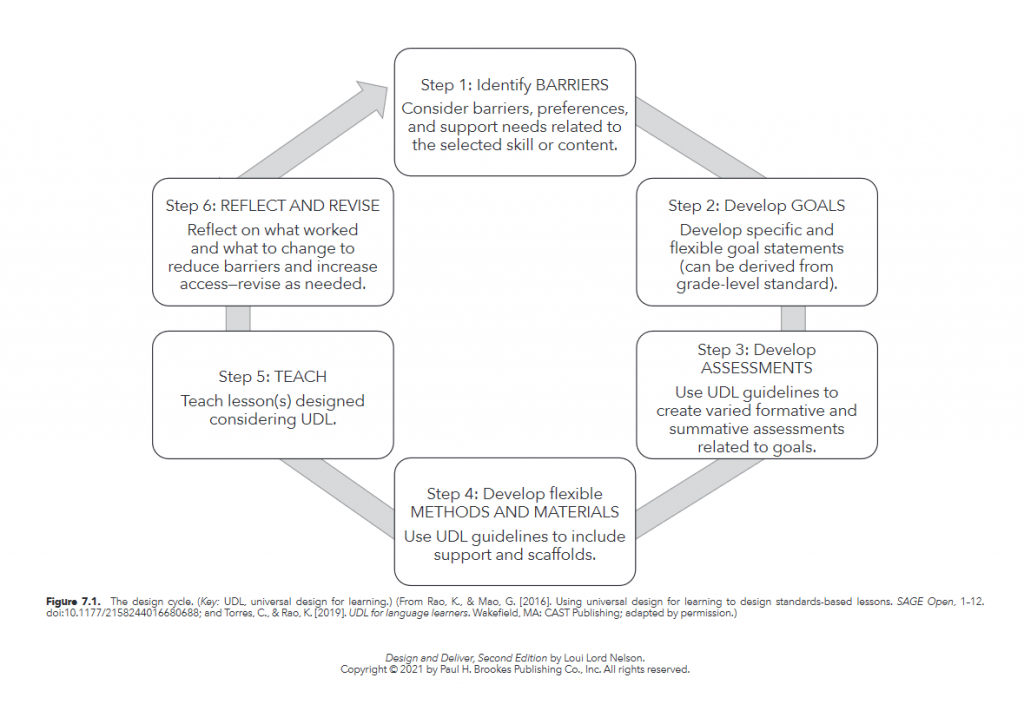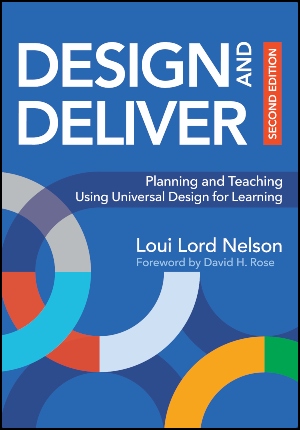UDL: Test Your Knowledge Quiz
How much do you know about this popular approach to teaching and learning?
Few topics in the world of education have been more enthusiastically written about and discussed in recent years than Universal Design for Learning (UDL). But how much do you know about this popular approach to teaching and learning?
Test your basic UDL knowledge with this short quiz, adapted from the recent second edition of Loui Lord Nelson’s bestselling UDL primer, Design and Deliver.
Take the UDL Quiz
Start
Congratulations - you have completed the UDL: Test Your Knowledge Quiz. You scored %%SCORE%% out of %%TOTAL%%.
For more on UDL, check out the following resources:
- Learn more about the second edition of Design and Deliver
- Infographic: 4 Big Things You Should Know About UDL
- Read the Q&A with author Loui Lord Nelson
- Read the blog post UDL and Self-Regulation During Distance Learning
- 3 UDL Books Every Teacher Needs
Your answers are highlighted below.
Question 1 |
Which of the following most accurately describes what UDL is?
A | A step-by-step curriculum teachers implement to meet the needs of all students |
B | A checklist teachers use to guide their instruction and monitor the effectiveness of their educational practices |
C | A framework for designing barrier-free, instructionally rich learning environments and lessons |
Question 1 Explanation:
Because UDL is a framework versus a curriculum or a checklist, it allows for freedom and creativity in both lesson and environment design. UDL helps teachers make informed choices about everything from what posters to put on the walls to what strategies, resources, and tools they will use to teach a lesson. This is very different from structures that ask you to perform a specific list of tasks or tell you to design lessons with a narrow scope.
Question 2 |
What are the three main principles of UDL?
A | Consultation, Persistence, Reflection |
B | Engagement, Representation, Action & Expression |
C | Identification, Participation, Expression & Communication |
D | Demonstration, Familiarization, Association & Connection |
Question 2 Explanation:
UDL is a framework, which means it is an organized collection of big ideas that lead to providing options. CAST provides a graphic organizer that they call The Guidelines, which are organized by three areas: 1) the principles, 2) the guidelines, and 3) the check- points. The principles of Engagement, Representation, and Action & Expression name the three overarching groups.
Question 3 |
To design a learning environment using the UDL framework, you need to understand and act on which important areas?
A | Learner variability & access |
B | Goals & flexibility |
C | Rigor & choice |
D | All of the above |
Question 3 Explanation:
To create a UDL-designed environment, you need to understand and act on six different areas: learner variability, access, flexibility, goals, rigor, and choice (Nelson, 2019). Learners learn differently.
Question 4 |
True or False: UDL can be used to design instruction for all subjects.
A | True |
B | False |
Question 4 Explanation:
The design of UDL is such that it can be applied in any instructional setting. No matter your subject area, you make instructional decisions. The UDL framework’s connection to how we learn versus a connection to a specific set of theories or types of practice allows it to be used in all settings.
Question 5 |
True or False: UDL is mostly only helpful for students with IEPs and learning differences.
A | True |
B | False |
Question 5 Explanation:
Although UDL grew out of accommodating the needs of learners with disabilities, the continued review of neuroscience and classroom application has clearly identified UDL as a viable and helpful framework to use in any classroom, especially an inclusive general education classroom where learners of all ability levels are present.
Question 6 |
A big part of successful UDL implementation is recruiting student interest. Which of the following is NOT a UDL strategy for engaging learners?
A | Optimizing individual choice and autonomy |
B | Optimizing relevance, value, and authenticity |
C | Optimizing entertainment value |
D | Minimizing threats and distractions |
Question 6 Explanation:
When we think about recruiting the interest of our students, we can get stuck on the aspect of entertainment, but recruiting interest has more depth to it than simple entertainment.
Question 7 |
One of the main goals of the UDL framework is to create learners who are
A | Quiet, well-behaved, and studious |
B | Resourceful, purposeful, and motivated |
C | Ambitious, single-minded, and organized |
D | None of the above |
Question 7 Explanation:
When the learning environment is structured to help students get what they need, you can begin moving them toward the ultimate position of a resourceful, knowledgeable, strategic, goal-setting, purposeful, and motivated learner (Meyer et al., 2014).
Question 8 |
According to UDL principles, which of the following means of expression would be appropriate for students to communicate what they know about a subject?
A | Hand-drawn cartoon or storyboard |
B | Podcast |
C | Short-form video |
D | All of the above |
Question 8 Explanation:
Consider all of the ways students can communicate to us what they know. When we allow students only one way to demonstrate their knowledge, we risk not realizing what they have learned and what gaps may still exist.
Question 9 |
True or False: Barriers to learning are directly affected by the classroom environment.
A | True |
B | False |
Question 9 Explanation:
The learning environment, whether face-to-face or digitally based, needs to be designed so that learners know they can learn there, feel welcomed while learning there, and are given opportunities to express what they have learned there. The learning environment includes the physical location where learning is taking place and the relationships that occur in that place. As such, the learning environment can directly contribute to barriers to learning.
Question 10 |
Which of the following is NOT a part of the UDL design cycle?
A | Identify barriers |
B | Develop flexible methods and materials |
C | Manage expectations |
D | Reflect and revise |
Question 10 Explanation:
Outside of specific templates and tools, a design cycle initially designed by Rao & Mao (2016), and updated by Torres and Rao (2019), provides overall guidance to educators as they design their lessons. The cycle lays out the phases an educator should move through when thinking through the design of a lesson.
Click here to see the full design cycle graphic.
Click here to see the full design cycle graphic.

Once you are finished, click the button below. Any items you have not completed will be marked incorrect.
Get Results
There are 10 questions to complete.
← |
List |
→ |
Return
Shaded items are complete.
| 1 | 2 | 3 | 4 | 5 |
| 6 | 7 | 8 | 9 | 10 |
| End |
Return
You have completed
questions
question
Your score is
Correct
Wrong
Partial-Credit
You have not finished your quiz. If you leave this page, your progress will be lost.
Correct Answer
You Selected
Not Attempted
Final Score on Quiz
Attempted Questions Correct
Attempted Questions Wrong
Questions Not Attempted
Total Questions on Quiz
Question Details
Results
Date
Score
Hint
Time allowed
minutes
seconds
Time used
Answer Choice(s) Selected
Question Text
All done
Need more practice!
Keep trying!
Not bad!
Good work!
Perfect!


